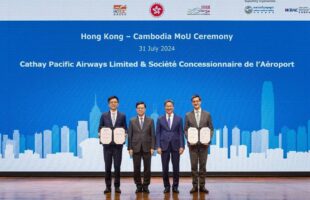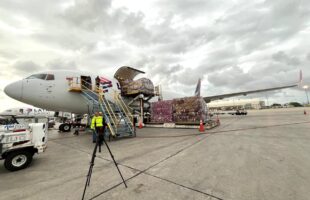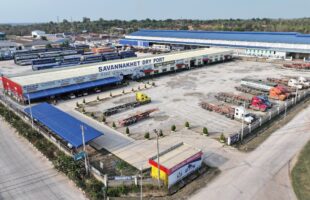Frost & Sullivan is expecting the transportation & logistics market to grow with expected CAGR 15.2 per cent in 2015. Gopal R, global vice president, transportation & logistics practice at Frost & Sullivan said that the industry is set to record strong double digit growth over the forecast period due to the continuous growth of the Indonesian economy driven by resilient domestic demand.
Gopal R is expecting strong private consumption growth, higher trade growth, lower external financing cost & oil price and infrastructure development to continue drive logistics industry growth in 2015. However, he said that rising labour wages will force businesses, including transportation & logistics to incur lower profit margin. He also said that the limitations to invest optimally in logistics infrastructure such as ports, airports and roads will hamper freight movement.
Freight activity in indonesia
Gopal R said that over 1.1 billion tons of total freight is expected by 2015 with CAGR of 5.4 per cent between 2010 – 2015. He said that road transport is the predominant domestic mode, accounting for about 69.7 per cent of freight ton-km.
He also said that sea freight in Indonesia continue to dominate with 97.1 per cent of total freight in 2014 while sea freight is expected to grow 5.1 per cent by end 2015.
Gopal said that railway freight, particularly in Java, expands rapidly due to double track project. “More than 55 per cent of 29 million tons handled in 2014 is predominantly coal from South, North and West Sumatera,” he added.
He also said that key contributors of railway freight are South Sumatera (65.1 per cent) mainly for coal and Java (23.2 per cent).
The way forward
Gopal said that ASEAN’s transportation and logistics sector is expanding rapidly, which is in line with the region’s economic growth. He added that the projected growth in ASEAN countries will have an average growth of 7.9 per cent where exports play a greater role, while domestic demand is expected to be moderate.
He also said that logistics service providers (LSPs) in Asia’s T&L sector, homegrown and global are rising. “ASEAN Economic Community (AEC) will foster more collaboration and market entry,” he added.
Gopal said that rising domestic demand, especially in infrastructure investment and private consumption in ASEAN will change the nature of trade in the region. “Domestic consumption has been driving growth in Indonesia, representing more than 50 per cent of the country’s GDP,” he added.
He said that the key to success for Indonesia towards the AEC is trade growth and logistics management, which are the strong correlated factors that can amplify business competitiveness and reduce cost.
He said that human resource development is the key to build high level competencies in the logistics capacity to face the competitive landscape in ASEAN Economic Community (AEC) including infrastructure, institutional agencies, LSPs capability, and availability of logistics service.
Gopal said that creation of ASEAN Economic Community in 2015 will build integration of multimodal transport network and logistics support function is critical point to achieve well-connected ASEAN logistics network.









